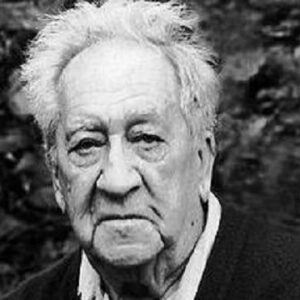Aaron Siskind was a teacher, editor, and photographer most recognized for his abstract photographic inventions. As a child, he studied literature and adored poetry and music. He exhibited all of the characteristics of someone who has grown up to be a writer. But it was an accident that landed a camera in his grasp during his first foray into photography. He began his career as a social documentary photographer, creating series including Harlem Documentary, a look at life in Harlem. Traffic surfaces, peeling plaster, road signs, and graffiti were all sources of inspiration for him. Close-up details of asphalt pavement, boulders, lava flows and painted walls dominated his work. Another remarkable element of his photography was that he preferred to depict flat shapes rather than anything that appeared to have three dimensions. He was the first photographer to mix realism and abstraction in a single shot. His photographs and images exhibited the influence of abstract-expressionist artists such as Franz Kline, Robert Motherwell, and Willem de Kooning at the time. He was shut off from the social and political realm as his passion for photography intensified. He began to find more pleasure in the inanimate forms he saw around him. As a result, his muse became anything abstract. Continue reading to uncover more fascinating facts about him.
Childhood and Adolescence
Aaron Siskind was born and raised in the Lower East Side of Manhattan. He was born in Russia to a Jewish immigrant family. He was the fifth kid in a family of five children.
In 1926, he received his Bachelor of Social Science degree in Literature from the College of the City of New York, after graduating from DeWitt Clinton High School.
During his formative years, he was drawn to music and poetry. It was only natural for him to become a lecturer as he grew older. He had probably never seen the face of a camera during his boyhood.
He taught English in New York City Public Schools for 21 years, from 1926 to 1947, after graduating.
He discovered his passion for photography by chance in 1929, when he was given a camera as a wedding gift. Siskind experimented with his camera and went click-berserk, eventually becoming an enthusiastic member of the New York Photo League.
He generally photographed everything that passed him by. Footprints in the sand, coiled ropes, walls on the edge of collapsing, any decaying form, and the like were captured by his camera.
Aaron Siskind’s Career
In the 1930s, Aaron Siskind began his photography career as a member of the Photo League. He began his career as a documentary photographer, and he went on to produce a number of films, including Harlem Document.
While in Martha’s Vineyard in the 1940s, he began taking photographs that focused on textures, forms, and abstract forms. He captured the mundane in a way that no other photographer could. He did, however, bring out the extraordinary in the commonplace.
On Martha’s Vineyard and in Gloucester, Massachusetts, he blended abstract with real-life and created interesting images from abandoned and discovered materials between 1943 and 1944.
He taught photography at Trenton Junior College in Trenton, New Jersey, from 1947 to 1949. Here, he taught his students how to shoot the most insignificant of objects and get the most out of them.
Harry Callahan, a colleague, convinced Siskind to join him on the faculty of the IIT Institute of Design in Chicago in 1950.
Siskind was a member of the Illinois Institute of Technology Institute of Design in Chicago from 1951 until 1971. During his time in Chicago, he got the opportunity to work closely with Harry Callahan.
He worked as a co-editor of Choice Magazine from 1960 to 1970.
He, like Callahan, elected to teach at the Rhode Island School of Design for the rest of his life in 1971.
In 1973, he worked as a Lecturer in Photography at Harvard University’s Carpenter Center.
His Major Projects
He wrote “Credo” for the symposium “What is Modern Photography?” in 1950 as an artist’s statement.
‘Aaron Siskind: Photographs,’ released by Horizon Press in 1959, was his first book.
‘Aaron Siskind: Photographer,’ released by George Eastman House in 1965, was his second book.
Achievements & Awards
He was awarded the John Simon Guggenheim Memorial Foundation Fellowship for Creative Arts – Photography in 1966.
At the University of Louisville, he was named Bingham Distinguished Professor of Humanities in 1969.
Received the Gold Star of Merit Award from Philadelphia College of Art and the Rhode Island Governor’s Prize for the Arts.
He received an Honorary Doctor of Arts degree from Columbia College in Chicago in 1971.
In 1976, he was awarded a Visual Arts in Photography Grant from the National Endowment for the Arts.
Personal History and Legacy
Siskind is frequently referred to be the “Father of Modern Photography” since he re-invented photography in his own style by giving it a unique touch. People who have become fond of Siskind’s work consider other photography to be predictable and dull.
Siskind, who was 87 years old when he died, is thought to have died of a stroke at his home in Providence. He leaves a daughter, two sisters, and two grandchildren behind.
Estimated Net worth
Siskind, Aaron $5 million in net value.
Trivia
Before his honeymoon vacation to Bermuda, Aaron Siskind was believed to have developed an interest in photography after receiving his first camera as a going-away present. He is said to have taken pictures the entire time he was on his honeymoon.


